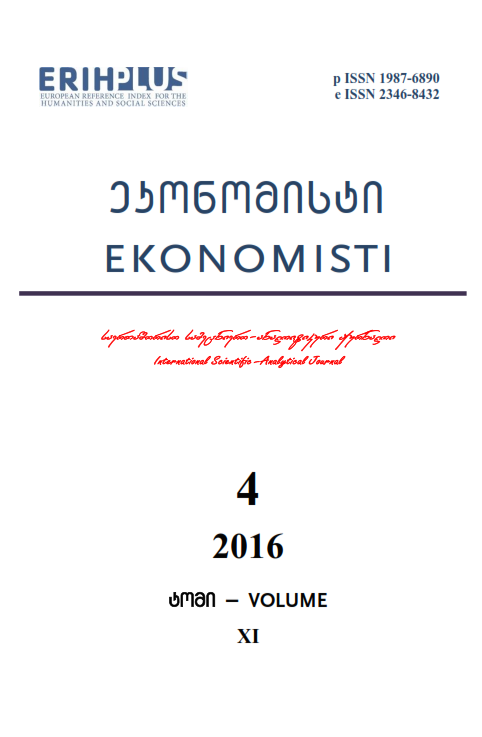
The international scientific and analytical, reviewed, printing and electronic journal of Paata Gugushvili Institute of Economics of Ivane Javakhishvili Tbilisi State University

THE PARTICULARITIES OF JAPANS ECONOMIC DEVELOPMENT IN THE SECOND HALF OF THE 20TH CENTURY: HISTORICAL-ECONOMIC CONTEXT
Expanded Summary
This article aims to consider the processes, that occurred in the Japanese economy in the second half of the 20th century and the factors that caused them. In the historical context, the paper discusses the peculiarities of the recovery of the Japanese economy after the Second World War, studies the specifics of the economic development in the 1970s, 1980s and 1990s, and identifies the factors that facilitate and restrain economic progress.
The path of the Japanese economy's recovery in the second half of the 20th century was difficult and ambiguous but government support, an export-oriented strategy and the cultural particularities of Japanese society, which have been successfully integrated into Japan's unique economic model, allowed the country to become one of the world's leading economies. In the post-war period, a special form of business organisation emerged in Japan. This form of business organization was characterized by state-monopoly regulation, the presence of a high level of state ownership, and direct state influence on the economy through market mechanisms.
The 1970s became a period of serious economic challenges and transformations for Japan. The 1973 energy crisis exposed the weaknesses of the Japanese economy and forced the country to develop more flexible economic strategies that focused on reducing dependence on imported energy resources and industrial restructuring. The leading role in the coordination of these processes belonged to the state.
In the 1980s, despite global challenges and domestic problems, the Japanese economy continued its development. High-tech production, exports and industrial innovations allowed the country to maintain its leading position in the world market.
The 1990s were a difficult period for the Japanese economy. The collapse of the “economic bubble” led to a deep economic crisis, accompanied by financial instability, falling investment, and rising unemployment. The measures taken by the government to stabilize the economy did not produce immediate results, and the country faced a protracted recession. However, by the end of the decade, signs of recovery emerged, associated with domestic reforms and improving international economic conditions.
Keywords: Japanese economy; "Economic bubble"; Economic development, Economic miracle; State assistance
